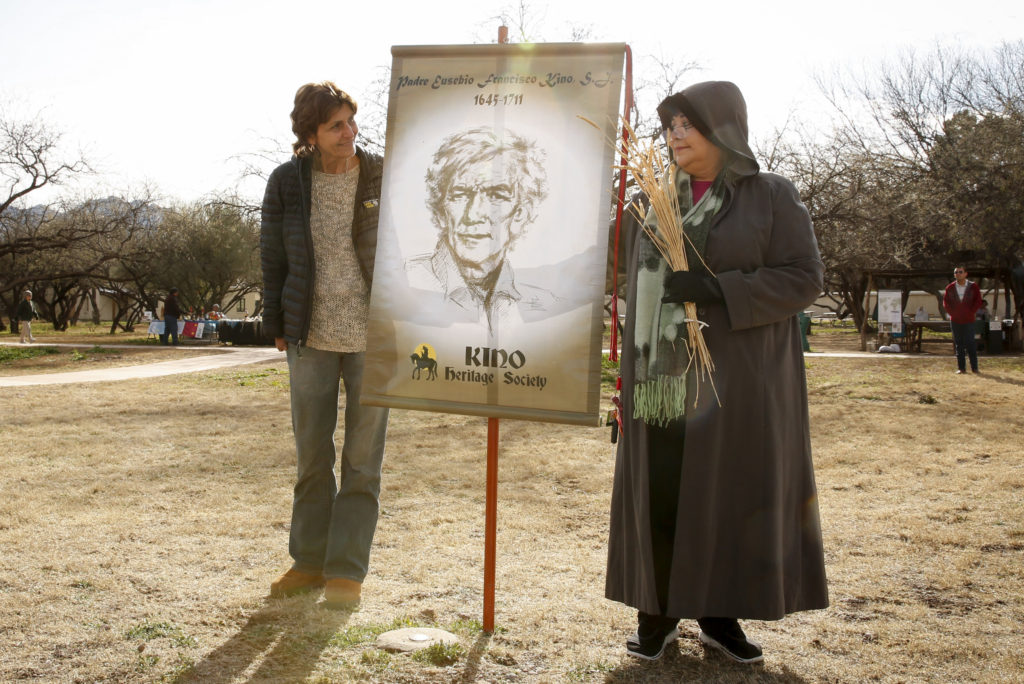
Servant of God Eusebio Kino
Anniversary of Death: March 15
Born Aug. 10, 1645 in Segno, Italy, Eusebio Kino entered the Society of Jesus, or the Jesuits, at age 20 and was ordained 12 years later, June 12, 1677. Known as “the padre on horseback,” Fr. Kino is believed to have traveled roughly 50,000 miles and became the first to map Pimeria Alta (an area that now includes southern Arizona and Sonora in northern Mexico), the Gulf of California and Baja California.
Considered the “Apostle to Arizona,” Fr. Kino first introduced Christianity to Arizona when he established San Xavier del Bac Mission in Upper Pimeria, just south of present-day Tucson in 1692. He eventually established 24 missions in present-day Arizona, California and Sonora, Mexico.
“Padre Kino,” as he was known, also introduced European seeds, fruits, herbs and grains for the Native Americans to use, and he taught them to raise cattle, sheep and goats — he’s also considered Arizona’s first rancher. He died in 1711 in present-day Sonora.
During the Extraordinary Jubilee Year of Mercy in 2016, Fr. Kino was recognized as a “model of mercy” at a symposium “Witnesses of Mercy in the Americas” co-sponsored by the Archdiocese of Denver and the Pontifical Council for Latin America. Despite Fr. Kino’s achievements as a cartographer, mathematician and agriculturalist, Fr. Kino was “first and foremost a zealous priest and a faithful preacher of the Gospel,” said presenter Jonathan Reyes, executive director of the U.S. Bishops’ Department of Justice, Peace and Human Development, according to Catholic News Service. “At the center of his life and the source of his almost unbelievable amount of labor and accomplishment was Fr. Kino’s burning desire to know Christ Jesus and to make him loved.”
A statue of Padre Kino represents Arizona in the U.S. Capitol’s National Statuary Hall. The Diocese of Tucson, along with the Archdiocese of Hermosillo, Sonora, and the Archdiocese of Trent, Italy (where he was born) are all involved in his canonization process. The positio on Padre Kino’s life was delivered to Rome May 4, 2006, making him a “Servant of God.”
Although there are no official feast days for Servants of God, March 15 is the date that Padre Kino passed into eternal life.
Impact on the Diocese of Phoenix
During his apostolic visit to Ss. Simon and Jude Cathedral in 1987, St. John Paul II noted Padre Kino’s “great personal sacrifice” in working “tirelessly to establish missions throughout this area so that the Good News concerning our Lord Jesus Christ might take root among the people living here. And the Gospel did take root, and numerous other missionaries came after Fr. Kino to continue the evangelizing effort.”
He is a patron of the diocese’s “Together Let Us Go Forth ~ Juntos Sigamos Adelante” campaign, as well as patron of the diocese’s Kino Catechetical Institute and the Kino Border Initiative (KBI).






